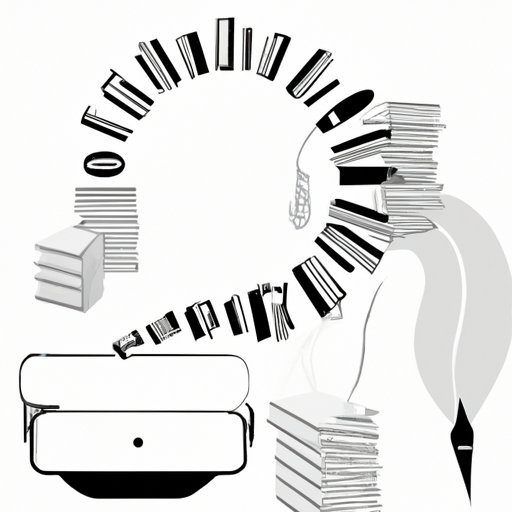Introduction
Metaphor has long been an important tool for writers, poets, and storytellers. It is a literary device that uses figurative language to draw comparisons between two seemingly unrelated things or concepts. But what exactly is a metaphor in literature? How can we understand and interpret the metaphors used by authors in their works? This article will explore the definition of metaphor in literature, the role of metaphors in literature, and provide a comprehensive guide to understanding metaphors in literature.
Exploring the Meaning Behind Literary Metaphors
A metaphor is a figure of speech that compares two unlike things without using the words “like” or “as.” For example, Shakespeare famously wrote, “All the world’s a stage” in his play As You Like It. This metaphor draws a comparison between the world and a stage, suggesting that life is a series of performances. In literature, metaphors are used to convey a deeper meaning and evoke an emotional response from readers.
Unpacking the symbolic meaning of metaphors is essential for understanding the message an author is trying to convey. In the previously mentioned example, Shakespeare is suggesting that life is fleeting and fleeting moments should be savored. By comparing life to a stage, he is implying that each person has a role to play and must make the most of it.
Authors also use imagery in metaphors to paint a vivid picture in the reader’s mind. For example, Robert Frost’s poem “The Road Not Taken” uses the metaphor of a road to represent life’s choices. He writes, “Two roads diverged in a yellow wood,/And sorry I could not travel both.” With this imagery, Frost conveys the feeling of being at a crossroads in life and having to choose one path over another.
There are many different types of metaphor in literature, including extended metaphors, implied metaphors, mixed metaphors, and personification. An extended metaphor is a metaphor that is developed throughout a work, while an implied metaphor is a comparison that is suggested but not explicitly stated. Mixed metaphors are metaphors that mix two unrelated ideas, and personification is the attribution of human traits to non-human entities. Understanding the different types of metaphors is key to interpreting their meanings.

A Comprehensive Guide to Understanding Metaphors in Literature
In order to truly understand metaphors in literature, it is necessary to examine how authors use them to create deeper meaning. Metaphors can be used to express abstract concepts, such as love, death, and joy, in a more concrete way. They can also be used to suggest a certain attitude or perspective on a particular topic. For example, John Steinbeck’s novel Of Mice and Men uses the metaphor of a dream to suggest the futility of the American Dream during the Great Depression.
Analyzing metaphor as a literary device is also important for understanding its power and impact. Metaphors are often used to evoke emotion in readers, to add depth to characters and plotlines, and to illustrate complex ideas in a simple and understandable way. Through metaphor, authors can give readers a new perspective on familiar topics and help them see the world in a different light.
Finally, examining the power of metaphors in storytelling is critical for comprehending the role of metaphor in literature. Metaphors can be used to draw connections between characters and settings, to foreshadow events, and to explore themes. They are powerful tools for expressing a writer’s ideas and feelings, and can be used to create a richer and more nuanced narrative.
Conclusion
In conclusion, metaphors in literature are powerful tools for expressing abstract concepts and exploring complex themes. They can be used to evoke emotion in readers, to add depth to characters and plotlines, and to illustrate complex ideas in a simple and understandable way. Ultimately, understanding the definition of metaphor in literature, the role of metaphors in literature, and how to interpret metaphors is essential for appreciating the power and beauty of literature.
In summary, metaphor is a literary device that uses figurative language to draw comparisons between two seemingly unrelated things or concepts. It is used to convey a deeper meaning and evoke an emotional response from readers. Authors use metaphors to express abstract concepts, to suggest attitudes and perspectives, and to explore themes in their stories. By understanding the symbolic meaning of metaphors and analyzing how they are used as a literary device, readers can gain a better appreciation for the power of metaphor in literature.
(Note: Is this article not meeting your expectations? Do you have knowledge or insights to share? Unlock new opportunities and expand your reach by joining our authors team. Click Registration to join us and share your expertise with our readers.)
